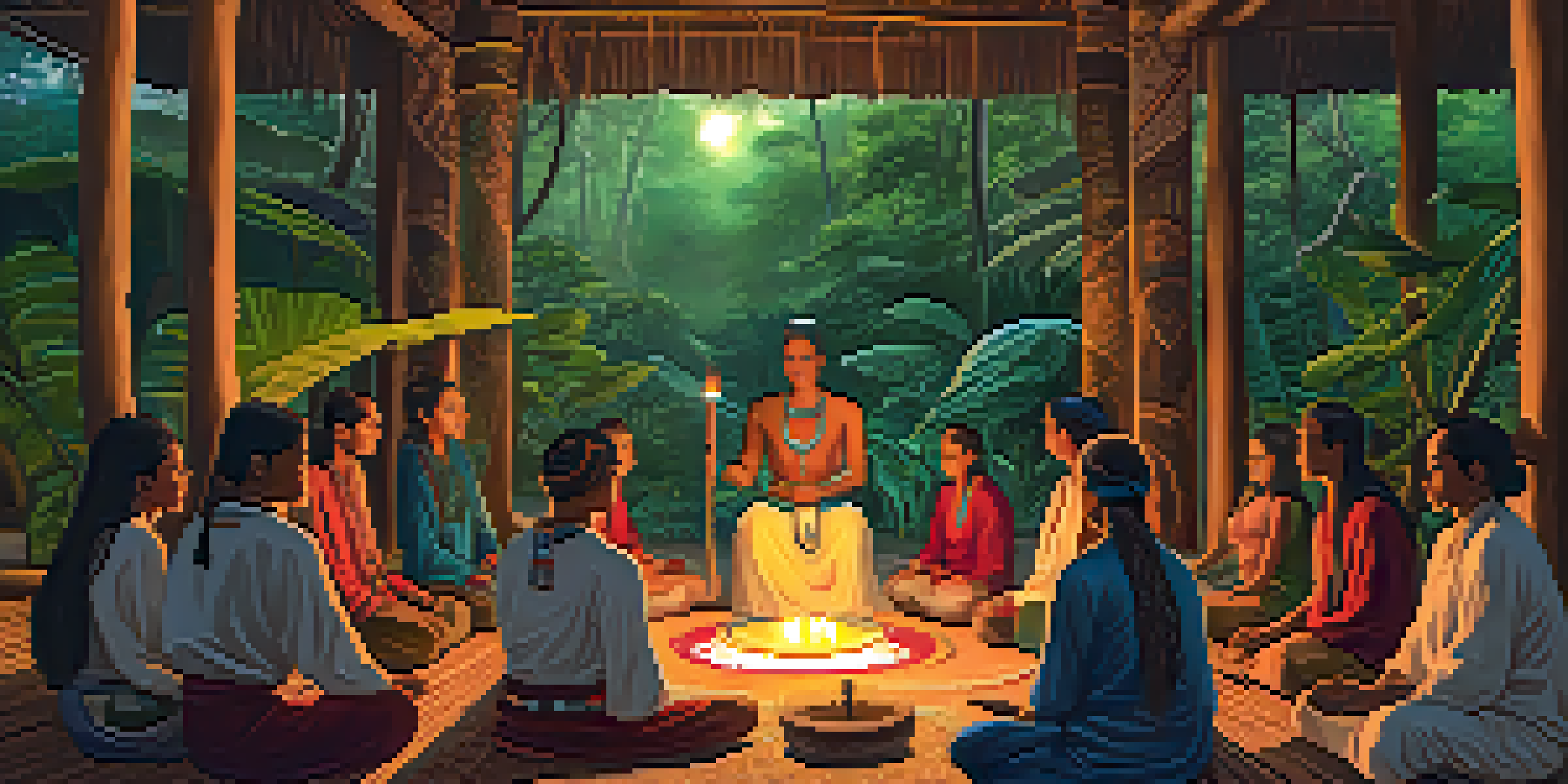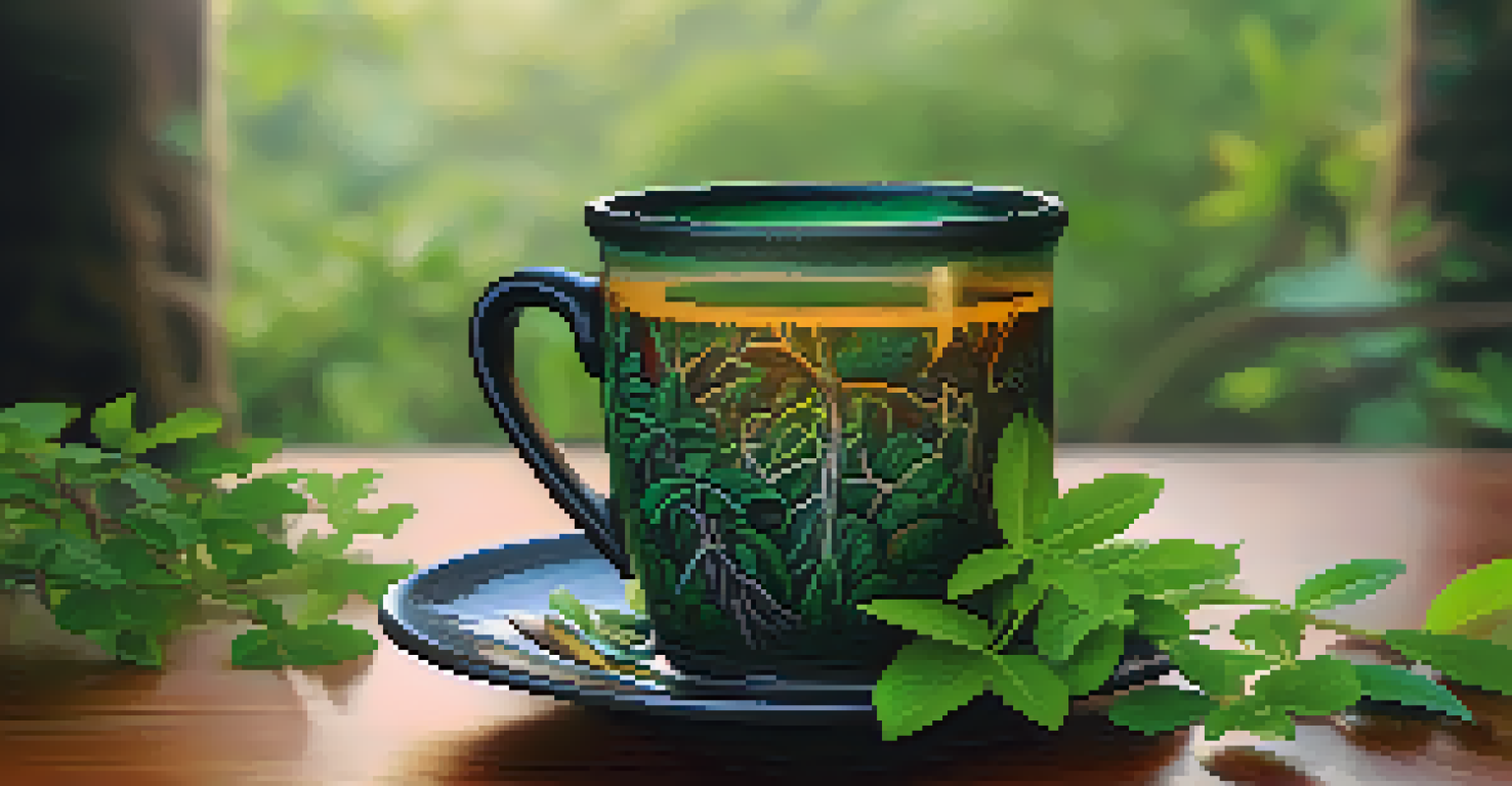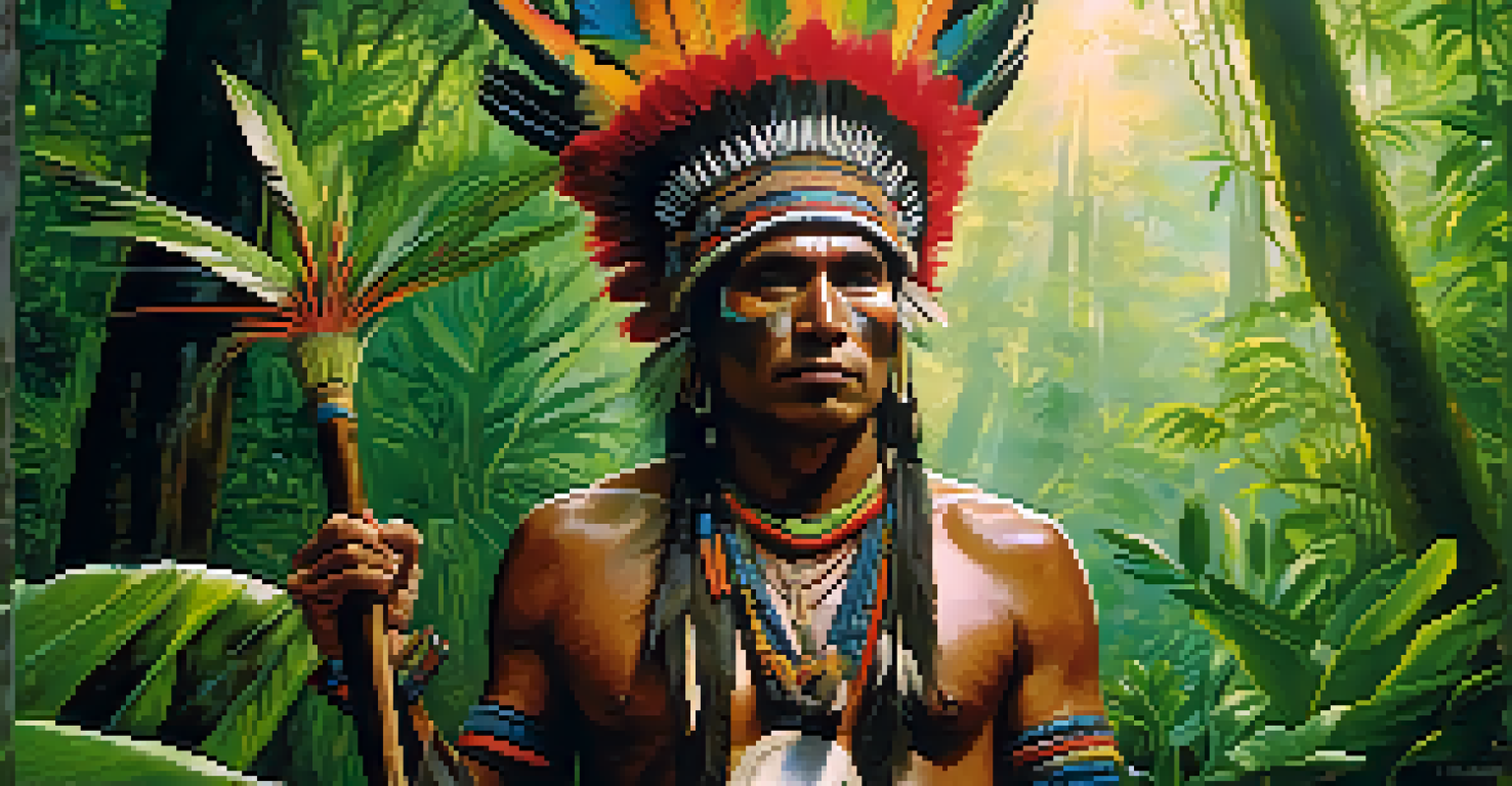Indigenous Perspectives on Ayahuasca: Spiritual and Cultural Roots

Understanding Ayahuasca: A Brief Introduction
Ayahuasca is a powerful plant medicine traditionally used by Indigenous peoples in the Amazon rainforest. It is made from the Banisteriopsis caapi vine and the leaves of the Psychotria viridis shrub, which together create a brew that is both hallucinogenic and therapeutic. For many Indigenous communities, Ayahuasca is more than a substance; it's a sacred tool for healing and spiritual exploration.
The experience of Ayahuasca is an invitation to explore the depths of our own being and connect with the world around us.
The use of Ayahuasca is deeply rooted in the cultural practices and beliefs of these communities. It serves as a bridge between the physical and spiritual worlds, allowing individuals to connect with their ancestors and the universe. This connection is not just personal; it emphasizes community, tradition, and the preservation of Indigenous knowledge.
In recent years, Ayahuasca has gained global attention, attracting people from various backgrounds seeking spiritual experiences. However, it's crucial to approach this practice with respect for its Indigenous origins and the cultural significance it holds within those communities.
The Spiritual Significance of Ayahuasca
For Indigenous peoples, Ayahuasca is often seen as a teacher, offering insights and guidance to those who partake in its ceremonies. The experiences induced by the brew can lead to profound personal revelations, healing traumas, and fostering a sense of connection with the world. This spiritual journey is usually guided by an experienced shaman who helps navigate the often intense emotional and psychological landscapes.

During these ceremonies, participants may encounter visions that reveal truths about themselves and their place in the universe. These experiences can be deeply transformative, providing clarity and a renewed sense of purpose. The shaman plays a crucial role in interpreting these visions, helping individuals understand their significance within the context of their lives.
Ayahuasca's Cultural Significance
Ayahuasca serves as a sacred tool for healing and spiritual exploration within Indigenous communities, emphasizing their cultural identity and traditions.
Moreover, the spiritual aspect of Ayahuasca extends beyond individual healing. It reinforces community bonds, as participants often share their experiences and insights afterward, fostering a deeper collective understanding of their shared existence.
Cultural Practices Surrounding Ayahuasca
Ayahuasca ceremonies are rich in cultural practices that vary by community, yet they often share common elements, such as music, chanting, and rituals. The use of icaros, or sacred songs, is particularly important, as these melodies are believed to facilitate the healing process and guide participants through their journey. Each song is unique, often passed down through generations, and carries specific meanings and intentions.
Indigenous wisdom is a treasure that is crucial for the survival of our planet and for our own well-being.
These ceremonies often take place in a ceremonial hut or maloca, a sacred space that is prepared with care and respect. Participants are encouraged to engage in rituals that honor the plants and the spirits they invoke. This preparation reinforces the idea that Ayahuasca is not merely a substance but a living entity deserving of reverence.
Additionally, the communal aspect of these ceremonies highlights the importance of social cohesion within Indigenous cultures. Sharing the experience with others fosters a sense of unity and collective healing, reinforcing the belief that individual well-being is interconnected with the health of the community as a whole.
The Role of the Shaman in Ayahuasca Ceremonies
Central to Ayahuasca ceremonies is the figure of the shaman, who serves as a spiritual guide and healer. Shamans are often seen as intermediaries between the physical and spiritual realms, possessing the knowledge and skills to facilitate the healing process. Their training can span many years, involving rigorous apprenticeships and deep immersion in their cultural practices and beliefs.
During the ceremony, the shaman prepares the Ayahuasca brew and leads participants through the experience. Their role is not only to administer the medicine but also to provide support and guidance, helping participants navigate their visions and emotions. This nurturing presence is critical, as the journey can sometimes be challenging and overwhelming.
Role of Shamans in Ceremonies
Shamans are essential guides in Ayahuasca ceremonies, providing support and interpreting visions while ensuring a tailored healing experience.
Furthermore, shamans often have a deep understanding of the medicinal properties of various plants, allowing them to create a holistic healing environment. Their expertise ensures that each ceremony is tailored to the needs of the participants, emphasizing the importance of individualized care within the communal setting.
Ayahuasca and Indigenous Identity
For many Indigenous peoples, Ayahuasca is closely tied to their cultural identity and heritage. The practices surrounding Ayahuasca are not just about the medicinal brew; they embody a way of life that values connection to nature, community, and spirituality. This relationship is vital for the preservation of their cultural narratives and traditions.
As globalization encroaches on Indigenous lands and practices, the use of Ayahuasca has become a means of cultural resilience. By sharing their traditions and knowledge, Indigenous communities can assert their identity and promote awareness of their struggles and rights. This is particularly important in the face of increasing exploitation and commodification of their sacred practices.
Efforts to preserve these traditions emphasize the need for mutual respect and understanding between Indigenous peoples and those seeking Ayahuasca experiences. This exchange can foster a deeper appreciation for the cultural significance of the practice, ensuring that it remains a source of strength and identity for Indigenous communities.
Challenges Facing Indigenous Ayahuasca Practices
Despite its rich cultural heritage, the practice of Ayahuasca faces numerous challenges, primarily due to the growing interest from non-Indigenous individuals and the commercialization of the experience. Many shamans express concern that the sacred nature of their traditions is being diluted or exploited for profit. This commodification can lead to a loss of authenticity and respect for the deep cultural roots of Ayahuasca.
Additionally, the influx of tourists and seekers can strain local resources and disrupt traditional practices. As more people travel to the Amazon for Ayahuasca retreats, the delicate balance of these communities is at risk. It's essential to approach these experiences with awareness and respect for the cultural context from which they arise.
Challenges of Commercialization
The increasing interest from non-Indigenous individuals risks commodifying Ayahuasca, threatening the authenticity and cultural integrity of traditional practices.
Indigenous communities are increasingly advocating for the protection of their traditional knowledge and practices. This involves establishing guidelines for ethical Ayahuasca use and ensuring that those who partake in these ceremonies understand the cultural significance behind them. The future of Ayahuasca as a spiritual practice depends on preserving its authenticity while navigating the complexities of globalization.
Preserving Indigenous Knowledge and Practices
Efforts to preserve Indigenous knowledge surrounding Ayahuasca are crucial for maintaining cultural integrity and promoting sustainability. Many communities are actively working to document their traditions, stories, and practices related to Ayahuasca, ensuring that future generations have access to this vital knowledge. This documentation can also serve as a tool for educating outsiders about the cultural significance of Ayahuasca.
Furthermore, collaboration between Indigenous peoples and researchers can foster greater understanding and respect for these practices. By engaging in meaningful dialogue, both parties can work towards the responsible sharing of knowledge, balancing the need for cultural preservation with the interests of those seeking to learn.

Ultimately, preserving the cultural roots of Ayahuasca is not just about safeguarding a tradition; it's about honoring the wisdom of Indigenous peoples and their connection to the natural world. By valuing these perspectives, we can foster a deeper appreciation for the intricate tapestry of human experience and the diverse ways in which we seek meaning and healing.